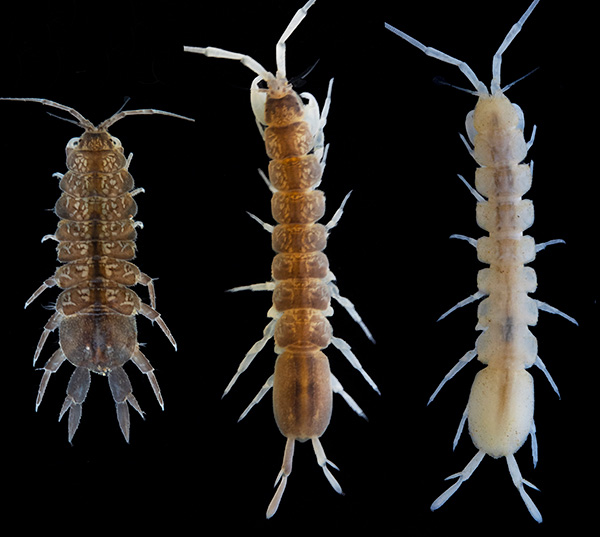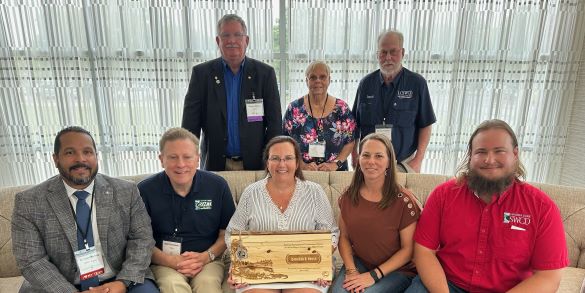
 Department of Conservation and Recreation
Department of Conservation and Recreation
Conserve. Protect. Enjoy.
 Department of Conservation and Recreation
Department of Conservation and Recreation
By Emi EndoPosted December 30, 2024
DCR continued to carry out its mission to Conserve, Protect and Enjoy in 2024, expanding its public lands and making improvements to make outdoor recreation more accessible. Here are some highlights from the past year.

Culpeper Battlefields State Park was dedicated as Virginia's 43rd state park on June 8, 2024.
Agricultural Cost-Share Program: Supported deployment of record funding for Virginia Agricultural Best Management Practices Cost-Share Program. In fiscal year 2024, the VACS program established contracts to implement more than 42,000 BMPs with 2,589 agricultural producers, 612 of which were first-time participants in the program. Collectively, these contracts obligate more than $111.7 million in state cost-share funding.
Biodiversity hotspot in Southeast Virginia: A project to acquire 1,900 acres of contiguous forest in Suffolk for a new natural area preserve received a $5.6 million federal grant. The preserve would protect one of the largest unprotected blocks of contiguous forest in the Albemarle-Pamlico watershed region.
New and expanded public lands: The agency completed 12 acquisitions to protect 1,320 acres for Virginia State Parks and natural area preserves.
25 years of land conservation grants: The Virginia Land Conservation Foundation, which celebrated its 25th anniversary, awarded $14.4 million in grant awards to conserve 11,220 acres around the commonwealth. The 28 projects include a potential future state park at Oak Hill and expansion of Caledon State Park.
Outstanding farms: Nine farms have been honored as Grand Basin winners of the 2024 Virginia Clean Water Farm Awards. The annual awards, sponsored by DCR in partnership with Virginia’s 47 Soil and Water Conservation Districts, recognize farmers that implement conservation practices and do their part to preserve water quality.

Recovering from Hurricane Helene: The impacts from deadly Hurricane Helene, which hit Southwest Virginia in late September, will continue to be felt for months. Flooding, damaged campgrounds, yurts and other buildings forced the temporary closure of nine Virginia State Parks and four natural area preserves. Agency staff cleared trails of downed trees, visited flooded neighborhoods and helped other state agencies pull together resources to assist agriculture businesses.

Flood resilience assistance: DCR offered a total of $97.5 million in financial assistance to localities and Planning District Commissions for flood resilience planning, projects and capacity building. Two new localities enrolled in the Community Rating System in 2024.
Coastal flood resilience planning: The Office of Resilience Planning added 520 new and updated flood resilience projects and initiatives to the Coastal Resilience Web Explorer as part of the Coastal Resilience Master Plan Phase II update. There are now 946 activities in the inventory, with $3.6 billion identified in costs for projects underway. A total of 275,000 rainfall-driven flooding simulations were modeled across 57 cities and counties in coastal Virginia to plan for current and future flood risk.
Improving dam safety: DCR regulates more than 2,500 dams in Virginia, most of which are privately owned. In 2024, DCR’s Dam Safety Program proposed revisions to both the Dam Safety Act and Impounding Structure Regulations and responded to the Mattawan Dam emergency. The agency has continued to drive down unknowns in the state’s dam safety inventory: the number of dams with unknown ownership fell from 812 to 5 and the number of dams lacking a condition assessment was decreased from 1,974 to 1,640.
Invasive plant list: Thirteen more species that pose a threat to the state’s ecosystems were added to the Virginia Invasive Plant Species List. The plants on the list, which now includes 103 species, threaten Virginia’s forests, marshes, wetlands and waterways. Landowners and land managers are encouraged to plant native species instead of Italian arum, nandina and others.

Wildlife Biodiversity Resilience Corridors: The Virginia Natural Heritage Program created a new map of high-quality, connected habitats in Virginia that support native wildlife. These key corridors for wildlife biodiversity are being investigated for measures such as wildlife crossings to both improve driver safety and help stem biodiversity loss.
Opening with a bang: Culpeper Battlefields State Park opened as Virginia’s 43rd state park. It is still under development but is currently comprised of more than 1,000 acres at the Brandy Station and Cedar Mountain Civil War battlefields as well as three other sites. Much of the land is already open to the public and includes trails and interpretive signs maintained by the American Battlefield Trust, Friends of Cedar Mountain Battlefield or the Brandy Station Foundation.
Making the outdoors more accessible: Virginia State Parks launched several accessibility initiatives to ensure more visitors can enjoy the beauty of the outdoors.

All-terrain wheelchairs were introduced at six parks, allowing individuals with mobility challenges to explore trails that might otherwise be inaccessible. (Visit https://www.dcr.virginia.gov/state-parks/all-terrain-wheelchairs for more information and the reservation request form.)
Additionally, Virginia State Parks installed EnChroma-adapted viewfinders for colorblind guests at each of its parks, becoming the first state park system in the nation to offer them at every location. The initiative received nationwide attention, including coverage from The New York Times, NBC Nightly News and FOX Weather.
Natural Bridge State Park also became the first state park in the U.S. to install the RightHear Accessibility system, improving accessibility for blind and visually impaired visitors. This innovative technology uses a network of beacons to provide real-time, location-based audio guidance via a smartphone app, helping guests navigate the park's trails and facilities.
Preserving history: The Inn at Foster Falls, an iconic structure located within New River Trail, was honored with a 2024 Virginia Historic Preservation Award. These awards are presented annually by Preservation Virginia to recognize exemplary historic preservation and historical research in the commonwealth. The full-service inn, the first of its kind within the Virginia State Parks system, offers 10 unique rooms for overnight guests, stately banquet and meeting rooms, a catering kitchen and beautiful two-story porches.

Douthat and Fairy Stone completed phase two of extensive renovations to 26 of their cabins, enhancing visitor experience and preserving the historical elements of these cherished parks. Updates include modernized kitchens and bathrooms, improved heating and cooling systems, and structural repairs.

Providing watershed education: The Office of Environmental Education has seen a significant increase in Meaningful Watershed Educational Experience funding requests, from $260,829 in FY23 to over $1 million in FY25. With a current budget of $250,000, demand is rising both financially and geographically.
State park master plans: The 10-year master plan for Southwest Virginia Museum Historical State Park was adopted, outlining a comprehensive vision for the park’s future development and preservation. This plan focuses on enhancing visitor experiences preserving the region’s rich history and promoting community engagement.
The following parks are creating or updating their 10-year master plans. This process involves gathering input from stakeholders and the community to shape a vision that balances conservation, recreation and education.

Honored for innovation: The Virginia State Parks Resource Management team received the 2024 National Association of State Park Directors Innovation Award for their GIS Portal project. The portal serves as a comprehensive resource for park field staff, empowering them to make well-informed decisions.
Isopod species discoveries: Staff at the Virginia Natural Heritage Program published a new book about several newly discovered species of isopods who live in cave, karst and shallow groundwater in Virginia and the Appalachians. Their research found that Virginia is extraordinary in terms of isopod biodiversity and dozens of species face extreme threat of extinction.

Hall of Fame: Debbie Cross, the longest-serving conservation district coordinator in DCR's history of the DCR, was inducted into the National Association of Conservation Districts Southeast Region Conservation Hall of Fame. Cross advocated for and strengthened Virginia’s soil and water conservation programs for nearly four decades.

Mussel richness map: Biodiversity data specialists at the Virginia Natural Heritage Program developed a new map of that identifies potential habitats of native freshwater mussels, the most imperiled group of animals. The data-driven tool is designed to help guide Chesapeake Bay restoration and conservation efforts.

Environmental Literacy Strategic Plan: The Office of Environmental Education engaged 67 organizations and 94 individuals — collaborating with businesses, government agencies, higher education institutions, non-governmental organizations, school systems and Tribal Nations — to complete the draft of Virginia’s first statewide K-12 Environmental Literacy Strategic Plan.
Matt Sabas, Starr Anderson and Kim Wells contributed to this post.
Categories
Conservation | Dam Safety | Dam Safety and Floodplains | Flood Resilience | Floodplain Management | Land Conservation | Native Plants | Natural Heritage | Recreation Planning | Soil and Water Conservation

